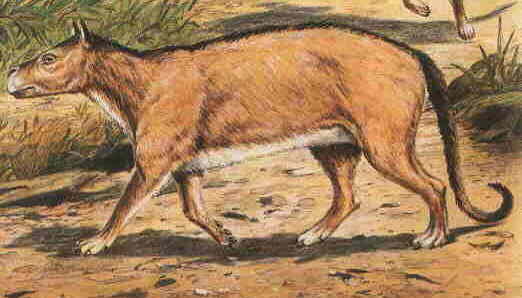 |
 |
 |
 |
 |
Produced
by the Population Genetics and Evolution class, Furman University |
||||
 |
 |
 |
 |
 |
Produced
by the Population Genetics and Evolution class, Furman University |
||||
 |
The
Paleogene: Condylarths |
 |
||
| Condylarths
were a diverse group of mammal-like organisms that are believed to have
given rise to many mammals that we encounter today. Condylarths ranged
anywhere between one to four feet in length; while many condylarths also
differed in limb structure in either having hoofed or clawed feet (Jehle
2006). These animals were the first to evolve hoofed extremities, which
allowed them to walk with greater efficiency on tougher terrain. The anatomical
differences displayed across this large group probably indicate that all
of their hunting habits and successes varied greatly between each other.
Scientists also believe that they were omnivores because of their evolved
molar-like teeth that would have allowed them to grind up plants along
with meat (Hunt 1997). Studies of their teeth structure and specialization
led scientists to believe that condylarths are potentially the early ancestor
of many mammals today (UM 2001). Another interesting characteristic that
condylarths shared with today’s mammals was that they were placental
organisms that gave birth to live young (Jehle 2006). Page by Pete Calomiris |
 |
| A condylarth. Picture From: Paleocene Mammals of the World | |
|
Hunt, K. 1997. Transitional Vertebrae Fossils. The Talkorgins Archive. Accessed April 2010. Jehle M. 2006. Condylarths: Archaic Hoofed Animals. Paleocene Mammals of the World. Accessed April 2010. University Of Michigan. 2001. New Fossils Suggest Whales And Hippos
Are Close Kin. ScienceDaily. Accessed April 2010. |